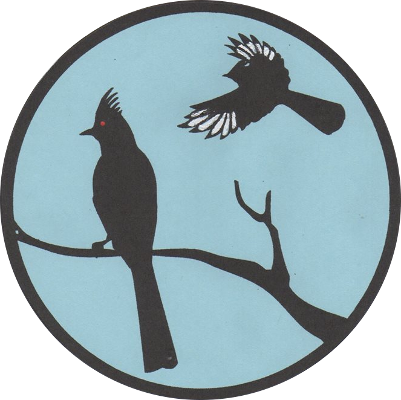December 6, 2021
California Wildlife Center (CWC) is grateful to the San Fernando Valley Audubon Society for your continued support of our work and our mission to take responsibility for the protection of native wildlife through rehabilitation, education, and conservation. Thanks in part to your contribution, CWC was able to care for 3,898 patients in the last 12 months.
We admitted 168 different species of animals this past year. Our most common avian patients were:
Mourning Doves
House Finches
Mallards
American Crows
Allen’s Hummingbirds
Cooper’s Hawks
Northern Mockingbirds
Some of the unusual patients we admitted this past year were:
Rufous Hummingbird
Black-chinned Hummingbird
Red-necked Phalarope
Red-breasted Sapsucker
Long-eared Owl
Common Yellowthroat
Black-throated Gray Warbler
Cackling Geese
Common Yellowthroat 21-3318
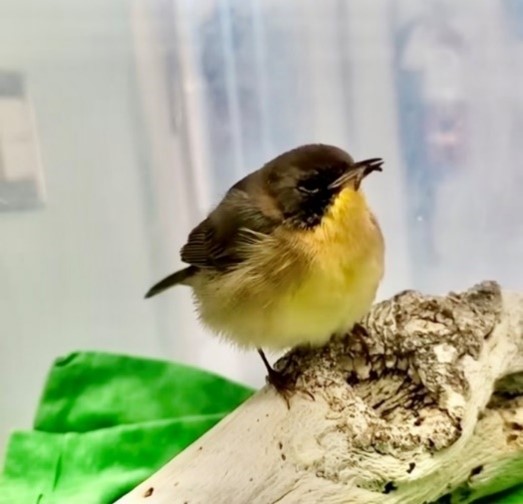
One of the more sensitive patients that we worked with was Common Yellowthroat 21-3318. This adult female Yellowthroat came in on 9/21/2021. The patient showed signs of head trauma and had a laceration on her right thigh. The finder knew she had hit a window, but it was unclear what caused her cut.
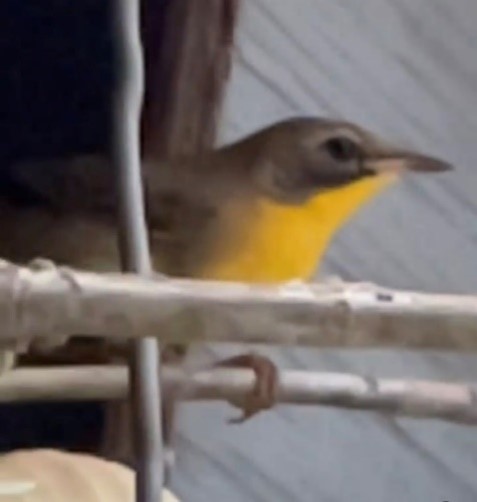
Common Yellowthroats are very sensitive and can quickly pass away if they experience too much stress. The staff had to be very careful when handling this patient and take breaks during treatments in order to not overstress her. She refused to eat so the staff provided nutrition every 2 hours to keep her body weight up. Common Yellowthroat have a fast metabolism and can quickly die from lack of calories. After about 4 days, she was able to eat on her own.
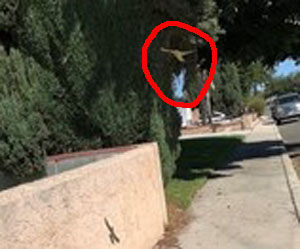
During her time in the ICU, she was administered pain medication, anti-inflammatories, and antibiotics. Dr. Guthrum Purdin closed the wound on her leg, and she healed quickly. On 10/7/2021 the Yellowthroat was stable enough to move into an outdoor enclosure to gain strength and become acclimated to the weather. On 10/17/2021 she was released back to her original location in Simi Valley to have a second chance at thriving in the wild.
Northern Mockingbird 21-3457
Another delicate case this past year was Northern Mockingbird 21-3157. This Mockingbird was admitted to CWC on 9/2/2021, doused in cooking oil and missing of their tail feathers. There was also a significant amount of glue contamination on the patient’s wings and legs. The Mockingbird had been caught in a glue trap originally intended to catch mice. Unfortunately, we admit about five to fifteen patients a year that have been stuck in glue traps. The best thing to do when this happens is to keep the animal connected to the glue trap and place them in a warm, quiet, dark location until they can be transported to a rehabilitation facility.
Most of the glue trap patients we see have sustained injuries from being traumatically removed from the trap, been doused in oil, and sometimes washed. Removing an animal from a glue trap is a very delicate process which requires a lot of stabilization. Although this Mockingbird was hypothermic due to their feather contamination, luckily the only trauma they suffered was the tail feathers being pulled out.
After two days of stabilization with heat support the Mockingbird was ready for their first wash. Although we are usually able to remove glue and oil contamination in one wash, it sometimes takes two or three separate washes if the contamination is extensive. We use a special liquid to break down the glue and then use soapy water to wash the glue and oil away. The warm water temperature is consistently monitored since birds can experience hypothermia very easily. The washing process is extremely stressful on birds and the patient’s stress level must be monitored at all times.
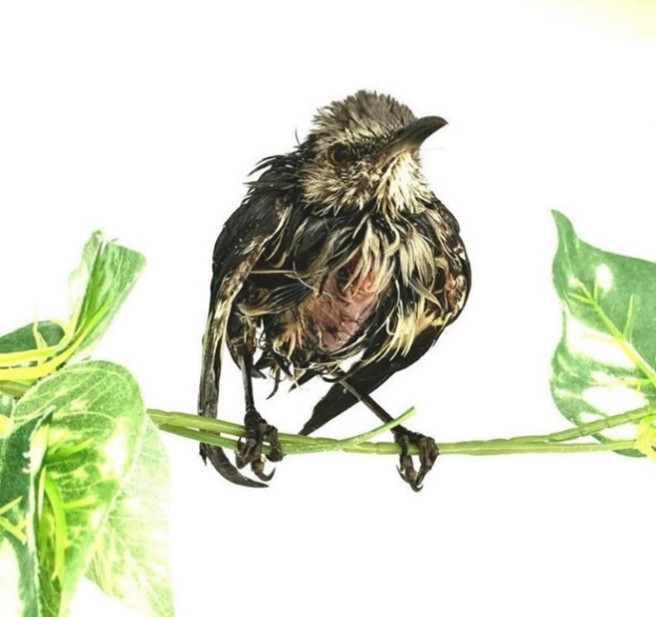
This Mockingbird made it through their first wash but unfortunately had to have a second wash after 3 more days of stabilization. After the second wash and additional stabilization the patient was almost ready for an aviary. This Mockingbird first needed to be treated for intestinal parasites they had most likely picked up from a bird feeder that had not been regularly cleaned. As you’re undoubtedly aware, bird feeders can be an infection point for many birds if the feeders are not regularly disinfected.
The Mockingbird was eventually moved to an aviary to grow out their feathers, regain flight stamina, and acclimate to the weather. On 9/30/2021 the Northern Mockingbird was released back to their original location in Sylmar.
This Northern Mockingbird and Common Yellowthroat are two of the thousands of animals we were able to release back into the wild in 2021. Your generous donation helped make it possible to give so many animals a second chance at life. We would once again like to thank the members of the San Fernando Valley Audubon Society for your continued support.
Warmest regards,
Jennifer Brent
Executive Director
California Wildlife Center
P.O. Box 2022
Malibu CA 90265
www.cawildlife.org
